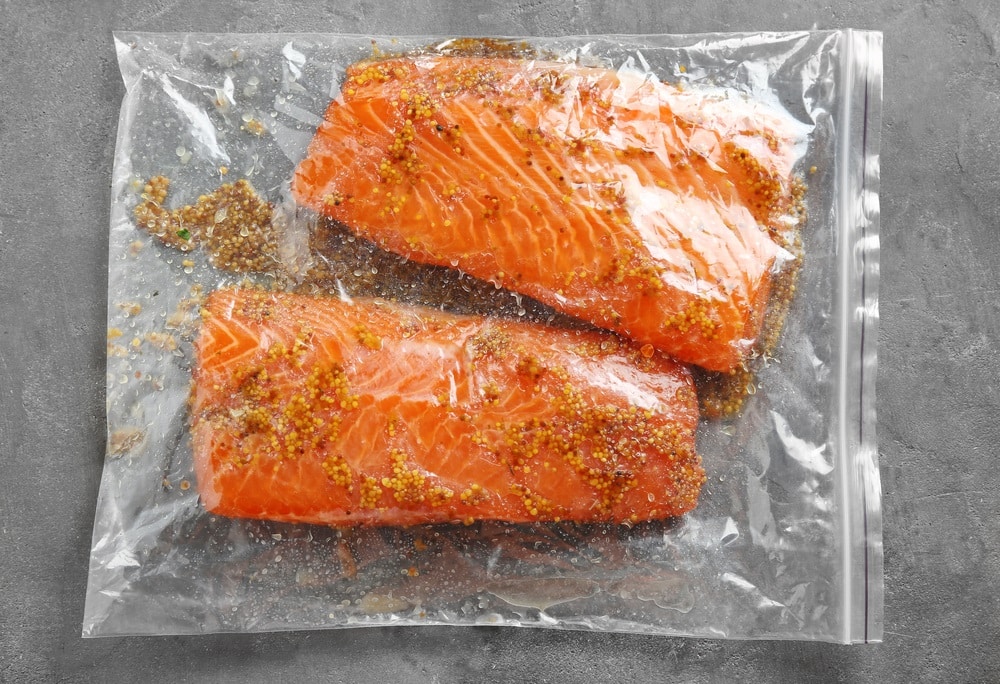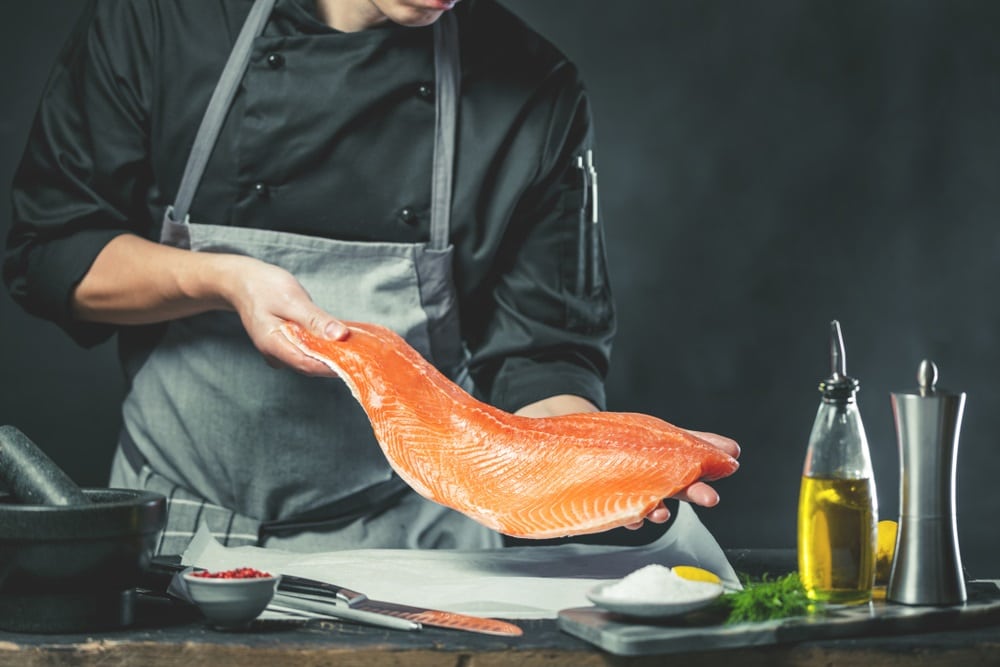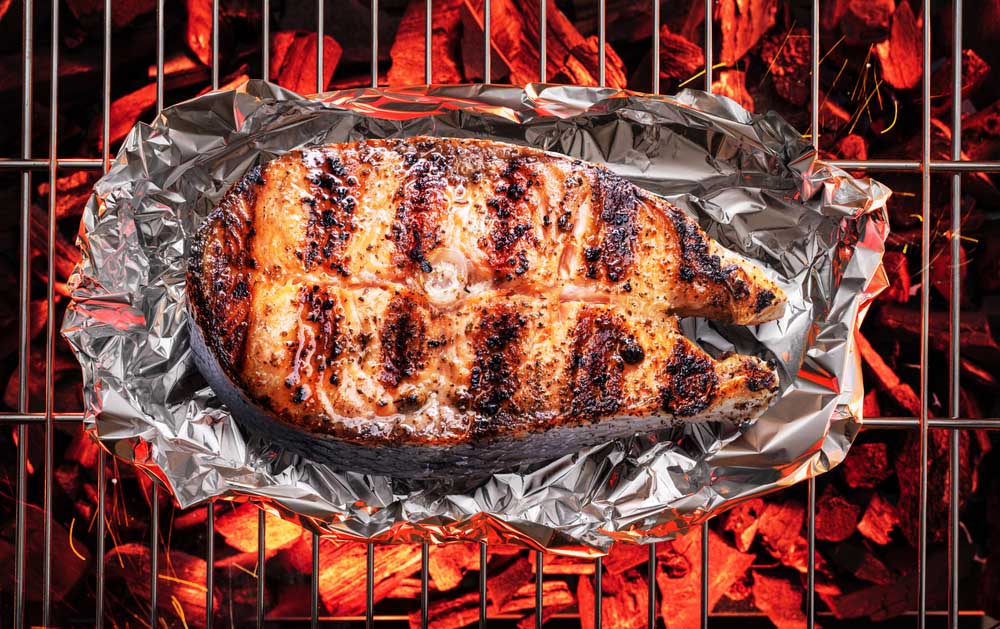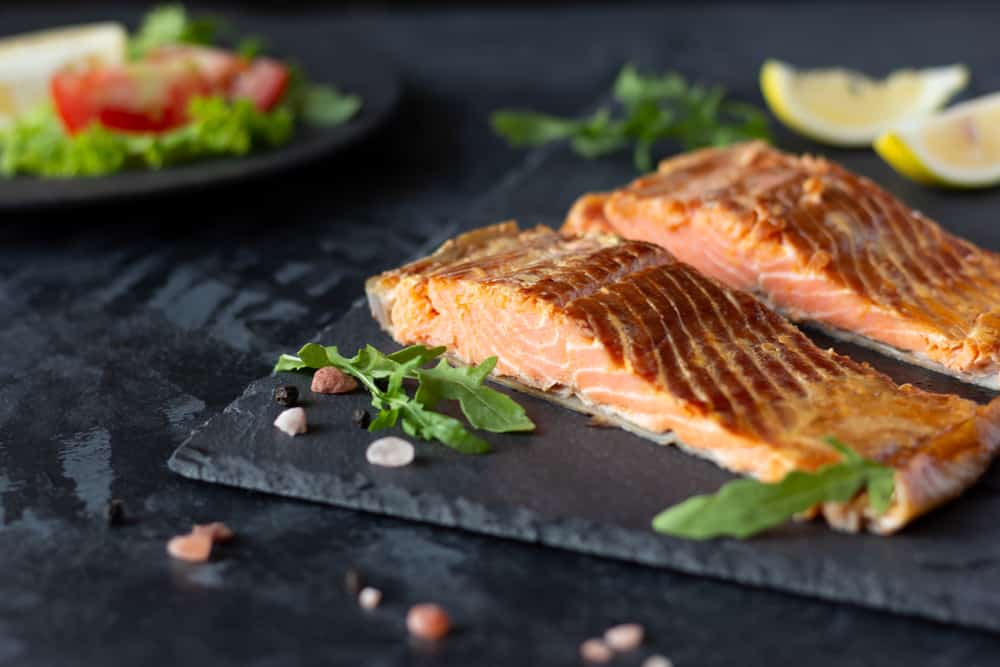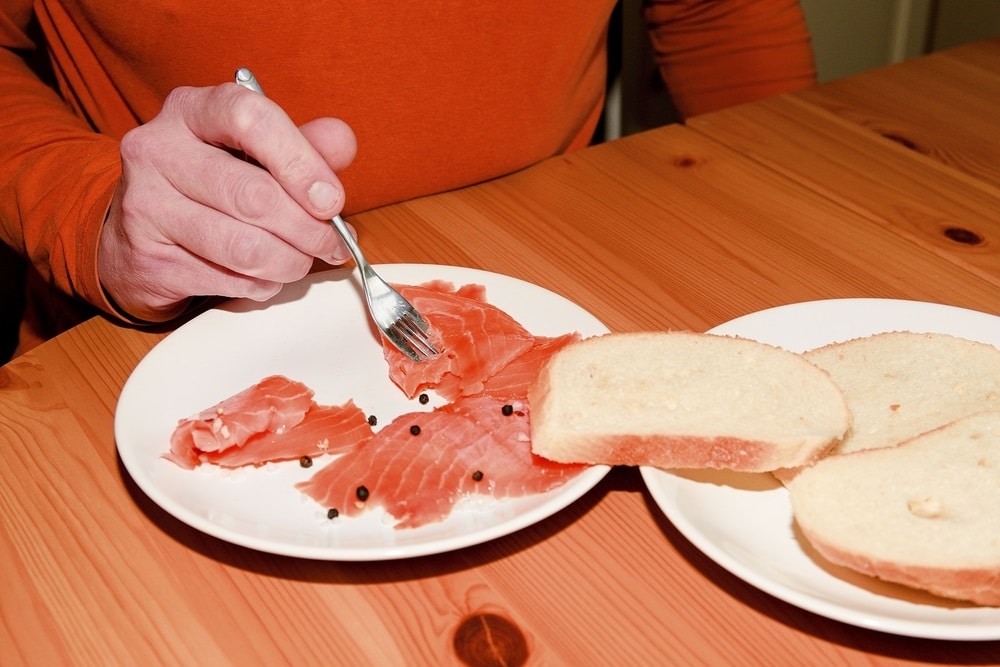
Salmon is one of the most delicious varieties of oily fish and, if cooked properly, is a real treat. Sustainability is becoming a problem so please make sure yours has an MSC blue fish tick before buying from an established dealer.
As with other oily fish, salmon is rich in omega-3 fatty acids plus protein and other nutrients.
It is quite easy to prepare this delicious fish at home but you do need to be careful how you prepare it. You don’t want it to dry out or become soft and mushy.
If you are wondering why your salmon has a soft, mushy texture rather than being firm, keep reading because we have put together 6 possible reasons.
Why Is My Salmon Mushy?
1. It may be old
Sometimes salmon that is past its sell-by date loses its firmness. If you are concerned about this, smell the fish. If fresh, it should smell of the ocean and should not have a strong, fishy smell.
It should also have a bright pinky-orange color with shiny silver skin. If the flesh is a greyish color and the skin is dull, it is not fresh and this may be why the fish is mushy. If in doubt, discard it.
We understand that this may seem wasteful but it is better than ending up in the emergency room! In the future, make sure you buy your salmon from a reputable fishmonger and be sure to transport it home on ice.
Keep it on ice in the fridge and use it within a day or two to maintain freshness and texture. Please note that salmon fillets should not be frozen as this can cause them to become mushy or dry as well.
2. Marinaded for too long
Some people like to marinate their fish in lemon juice mixtures or other acid-based sauces before cooking. However, it should not be left in the mixture for too long or the proteins start to break down and the fish becomes mushy.
It is not necessary to marinade salmon for tenderness as this fish is never tough but you may wish to impart some extra flavor.
Salmon fillets have a mild taste and it can be delicious to first marinate them in a little lemon or orange juice plus soy sauce, garlic, and even ginger.
If you choose to marinate your fish, do not leave it for longer than 30 minutes before cooking it.
Here’s a delicious salmon marinade recipe that will impart a sweet saltiness to the fish but will not turn it mushy provided you remove and cook the fish after thirty minutes.
Ingredients:
- 60 ml olive oil
- 60 ml low sodium soy sauce
- 15 ml Dijon mustard
- 1 tablespoon runny honey
- 1 tablespoon fresh lemon juice
- 1 garlic clove, peeled and crushed
- 2 ml freshly ground black pepper
Instructions:
Mix everything together in a shallow glass dish. Lay the salmon fillets in the marinade in a single layer. Refrigerate and turn the fish after 15 minutes. Cook within 30 minutes.
3. Too much moisture
Never leave fish fillets lying in water, sauce, or marinade in the fridge. Before cooking, pat the fillets dry with paper towels.
The fish should either be baked on tinfoil in a hot oven or fried in a hot pan with butter and oil to ensure fast evaporation of surface moisture and to seal in the inner moistness.
4. Cooking at an incorrect temperature
Cooking at too low a temperature will result in the development of steam, creating a mushy texture.
If you have to cook your salmon on the stovetop rather than in the oven, it is suggested that you use cast iron or stainless steel cookware to make sure it cooks evenly.
Moreover, while cooking the fish, you should do it at a high temperature. This is because a low cooking temperature results in slow cooking, which adversely impacts the texture of the fish.
It will either soften too much and become mushy or it will harden and dry out if cooked for too long. The best is a high temperature for a shorter time.
Remember to remove the fillets from the fridge about 15 minutes before cooking them. This will result in a better texture than if you try to cook them when they’re still ice cold.
5. Cooking the fish for the incorrect amount of time
Most types of fish require quick cooking over high heat and salmon is no exception. This is especially true for fillets. Set the oven to 350 degrees Fahrenheit and cook the fillets in a single layer for between twenty and twenty-five minutes.
If you are using a grill, air fryer, or frying pan, the cooking time will be even shorter. You’ll know when your fish is perfectly cooked when you can flake it easily with a fork.
To pan fry, heat the oil and butter then place the fillets in the pan, skin side down.
Leave them untouched (do not be tempted to move the fillets, turn them, or poke them) until you see the flesh become a lighter shade of pink about three-quarters of the way up.
Turn the fillets over and cook them for just a couple of minutes more for a total of about 9 minutes for thick fillets and 6 minutes for thin ones.
6. Removing the skin
The fish skin not only imparts a delicious flavor but also helps the fish to maintain its firm texture. Removing it before cooking may be a reason for your fish becoming mushy. If you don’t like the skin, remove it just before plating up.
To wrap up
As you can see, there are multiple reasons why your salmon may be mushy. We hope our list will help you prevent this issue in the future.
